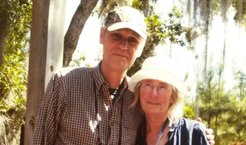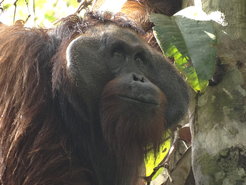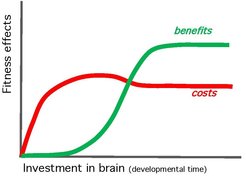Comparative Socioecology

Our group’s focus is on the natural history of animals in nature, and so in our work we try to integrate social behavior, behavioral ecology, life history, genetics and cognition. One major project concerns the socioecology of wild Bornean orangutans, with a current emphasis on male careers, and the ranging and mating correlates, and infant development. The second major project concerns the evolution of cognition in vertebrates, with a current focus on the effect of parental provisioning and opportunities for vertical and oblique skill transmission on relative brain size.
Ongoing Projects
Orangutan socioecology
Based on 15 years (2003-2018) of detailed data on the Tuanan population of Bornean orangutans, we will pursue the following questions, which will wherever possible be done in parallel with similar analyses of the Sumatran population at Suaq Balimbing (group Schuppli).

Socio-ecological landscape: Individual orangutans appear to move in interdependent ways across the forest, even if not in close-range association. Using simultaneous follows, we intend to reconstruct the socioecological landscapes of “food, foes, and friends” and so identify the rules governing decisions to initiate or avoid meeting and associating with others. We expect these rules to vary depending on relatedness (among adult females), dominance (competition over food or mates), need for playmates for immatures, and potential mates (females avoiding meeting males, and hiding if necessary, made possible by males revealing their identity and position through long calls). Showing fission-fusion, orangutans may be the perfect model species to study variation among age-sex classes in the sensitivity to the cost of association.
Male bimaturism and mating strategies: Sexually mature orangutan males transition from unflanged to flanged after variable periods of developmental arrest, and also appear to vary in ranging once flanged. Available data already reveal the presence of highly flexible mating strategies (when to become flanged) and tactics (post-flanging). Using data on ranging and patterns of presence in the study area, along with long-call rates, dominance relations and genetic paternity information of numerous individual males, we are trying to recognize and interpret these flexible alternative male career patterns.
Mother-offspring conflict: The late weaning and long birth intervals of orangutans permit disentangling various components of mother-offspring conflict. Since maternal ‘decisions’ to become pregnant generally precede full weaning, we ask whether its timing is preceded by changes in mother-infant relations and how full nutritional independence changes the behavioral ecology of immatures. The findings will contribute more insight into why the severity of parent-offspring conflict appears to show such strong taxonomic variation.
Forest frugivore ranging patterns
In a single tropical rain forest, multiple primate frugivores coexist. What makes this possible remains debated. One approach is to compare the movement patterns of these species in relation to constraints imposed by their social structure or riverine refuging. We will analyze many years of range use data for four different frugivores at Ketambe (Sumatra) to explore this question (with Group Crofoot).
Brain size and parental provisioning

The expensive brain hypothesis argues that a species’ brains are as large as can be supported energetically. So far, tests have focused on adult brains, but developing immatures face a massive bootstrapping problem: brains must be built and filled with experience before they provide significant fitness benefits. Natural selection resolved this problem by farming out the costs to parents: the parental provisioning hypothesis. Tests with mammals and especially birds provide strong support. Here we will focus on the major discrepancies between the brain sizes of endothermic versus ectothermic vertebrates and ask whether parental provisioning explains both this gap and the variation within ectotherms. More generally, this difference may also predict fundamental differences between these two categories of metabolism in brain development and structure, cognition (e.g. presence of intelligence) and growth strategies (esp. determinate growth).
Learning the niche
Developing offspring of most species must acquire skills to become reproducing adults. In addition to parental provisioning, the vertical transmission of these skills is facilitated because parents/caretakers provide opportunities for protected and/or social learning. This explains the previously documented broad taxonomic correlation between the quantity and quality of these inputs, the complexity of the niche and relative brain size. Here, two questions will be pursued.
First, while this correlation has been established, it must be refined with more details on the nature and duration of these inputs, adult niche complexity, and adult brain size. The most complex niches are predicted to be those where efficient skill transmission is possible. In addition, we will ask which features (including life history pace) differ in species that deviate from this general pattern, either because these inputs are impossible (e.g. many raptors, many seabirds), or where they are less critical (e.g. large grazers). Eventually, we would like to have a theory that links brain size, niche complexity and life history to developmental processes.
Second, a subset of species shows active involvement of parents or caretakers in skill acquisition (teaching or information donation). We will ask under which conditions this process evolved across species, and what the consequences are for niche complexity, brain size, and life history.







